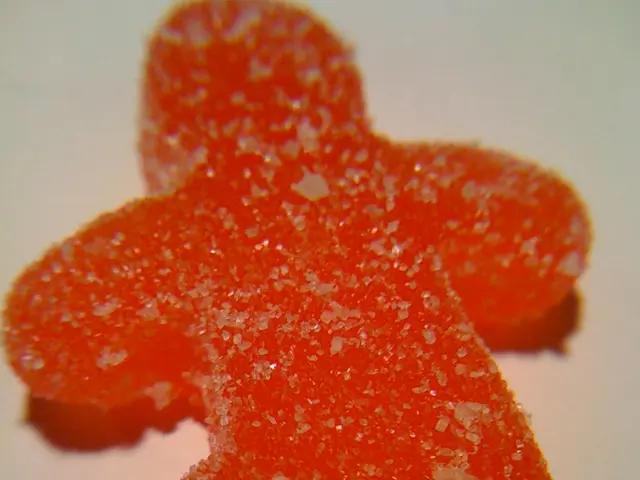Rapid, Severe Rosacea: Causes, Symptoms, and Treatment Options
Rosacea Fulminans: A Rare and Severe Skin Condition
Rosacea fulminans, a severe and rapid-onset inflammatory skin disorder, primarily affects females of childbearing age. Characterized by sudden, painful, and swollen nodules and pimples, this condition typically manifests on the central part of the face, including the chin, cheeks, and nose. Distinct from common rosacea or acne, these symptoms are more pronounced and develop swiftly.
Known interchangeably as pyoderma faciale, the root cause of rosacea fulminans remains elusive. A 2020 review suggests potential connections with other conditions, such as inflammatory bowel disease and pregnancy, as well as a higher likelihood in individuals with a past history of rosacea.
Potential triggers for rosacea fulminans include emotional stress, hormonal fluctuations, and certain medications. A 2021 literature review highlighted the possibility of dietary factors in triggering or aggravating rosacea symptoms, yet these findings do not specifically pertain to rosacea fulminans.
Potential dietary triggers may include spicy foods, alcohol, and certain foods containing cinnamaldehyde, such as chocolate, tomatoes, and citrus fruits. Histamine-rich foods and drinks, like wine, aged cheese, and processed meats, and hot drinks may also cause or worsen rosacea symptoms. However, it is essential to note that dietary triggers may differ significantly from person to person. Consequently, healthcare professionals do not recommend universal dietary recommendations for rosacea patients.
Symptoms of rosacea fulminans primarily impact the forehead, nose, cheeks, and chin. These may include sudden redness, painful pustules and papules, swelling and inflammation, flushing and blushing, and stinging and burning. Some individuals may experience ocular symptoms, such as dry, burning, or itching eyes and light sensitivity. Systemic symptoms, like fever and fatigue, are rare.
Treatment for rosacea fulminans may involve oral isotretinoin, a prescription-only acne medication, and corticosteroids. Antibiotics combined with corticosteroids and lifestyle changes have also shown to alleviate symptoms in some cases. Identifying and avoiding triggers, such as reducing stress, making dietary modifications, and using gentle skin care products, may further improve overall management and quality of life for individuals with rosacea fulminans.
People exhibiting symptoms of rosacea fulminans beyond typical rosacea or acne, such as large, tender nodules, abscesses, and significant facial discomfort, or experiencing a sudden onset or persistent and worsening symptoms, should consult a dermatologist or other healthcare professional. Early intervention can potentially mitigate complications, such as scarring, infections, and emotional distress.
Apart from managing symptoms, prompt medical attention can lead to a more accurate diagnosis and personalized care tailored to an individual's needs and circumstances.
While there is no definitive link between specific dietary triggers and rosacea fulminans, understanding common rosacea triggers, such as food allergies and endocrine disorders, can provide essential insights. Common rosacea triggers often include spicy foods, alcohol, foods high in histamine, and foods containing cinnamaldehyde. Identifying personal dietary triggers requires consultation with a healthcare professional and regular monitoring of symptoms after consuming specific foods.
- In managing rosacea fulminans, identifying personal dietary triggers, such as food allergies and endocrine disorders, can provide essential insights, with common rosacea triggers often including spicy foods, alcohol, foods high in histamine, and foods containing cinnamaldehyde.
- A prompt medical visit is crucial for individuals experiencing symptoms of rosacea fulminans beyond typical rosacea or acne, as early intervention can potentially prevent complications like scarring, infections, and emotional distress.
- Rosacea fulminans, a rare and severe skin condition, is primarily characterized by sudden, painful, and swollen nodules and pimples that appear on the central part of the face and affect females of childbearing age, and is often associated with dermatology and the science of medical-conditions related to health-and-wellness and skin-care.








